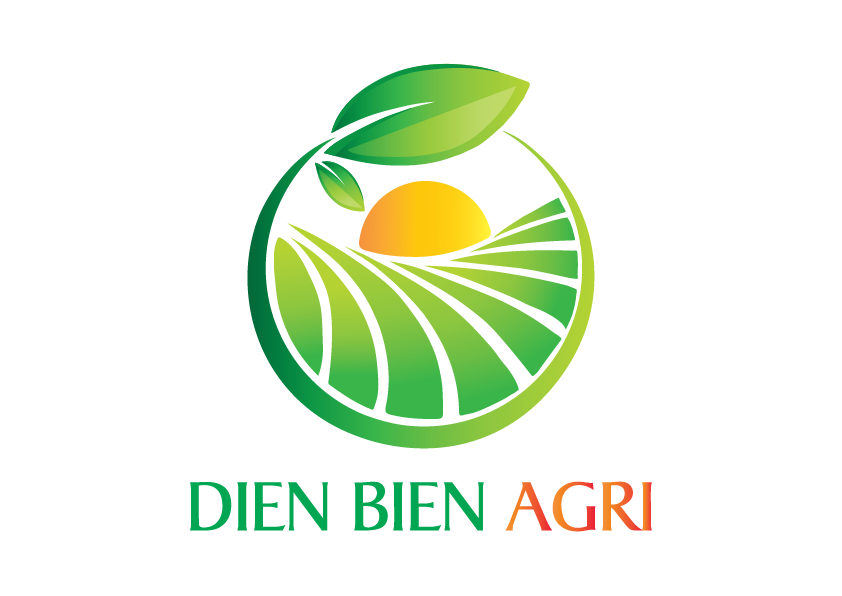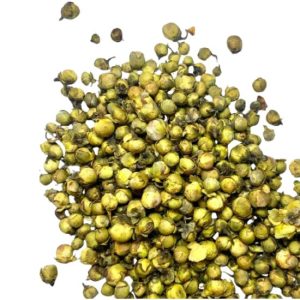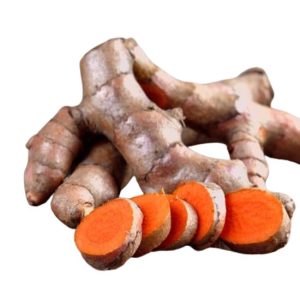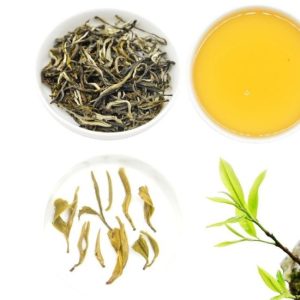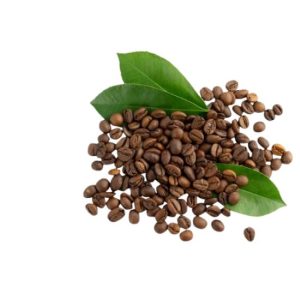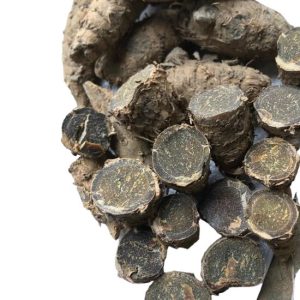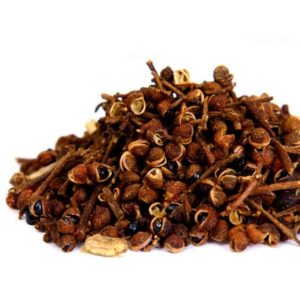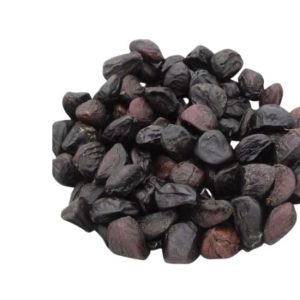Arrowroot Vermicelli
0 ₫
Arrowroot Vermicelli is a special clear, chewy noodle made from 100% natural arrowroot starch, sun-dried.
Product Description
- English Name: Arrowroot Vermicelli
- Origin: Dien Bien – Northwest, Vietnam
- Ingredients: 100% Arrowroot starch
- Moisture Content: Max 13%
- Impurities: Max 0.5%
- Shelf Life: 12 months
- Drying Process: Natural sun-dried
- Quality Standard: No additives, preservatives, colorants; no mold.
- Packaging: 1kg PE bag or as per customer request
- Supply Capacity: 100 tons/year
For international customers, WhatsApp us at: +84.973.447.926.
Arrowroot Vermicelli: The Ultimate Guide to Traditional Asian Glass Noodles
What is Arrowroot Vermicelli?
Arrowroot Vermicelli is a type of thin, translucent noodle made from arrowroot starch. These delicate noodles are also known as glass noodles or cellophane noodles. The semi-transparent appearance gives them their distinctive “glass-like” quality.
Made from the starch of arrowroot plants, these noodles offer excellent texture and nutritional benefits. Arrowroot Vermicelli has been a staple in Asian cuisine for centuries. The traditional production methods preserve the natural properties of the arrowroot plant.
Origins and Traditional Production of Arrowroot Vermicelli
Historical Background
Arrowroot noodles originated from tropical regions where arrowroot plants thrive naturally. In Vietnam, the red arrowroot plant (Canna indica) is particularly valued for noodle production. These plants can grow up to 1.5 meters tall with distinctive characteristics.
The red arrowroot plant features alternate leaves measuring 30-50 cm in length. The plant produces white or red flowers in clusters. Most importantly, the tuberous roots contain high starch content perfect for noodle making.
Traditional Harvesting Methods
Farmers typically harvest arrowroot tubers at the end of the year. The harvesting process involves carefully digging up the bulbous roots. After harvesting, the tubers undergo thorough cleaning and processing.
The traditional method involves grinding the tubers into powder form. This powder is then washed multiple times to remove impurities. The purification process can take several hours to achieve optimal quality.
Manufacturing Process of Arrowroot Vermicelli
Starch Extraction and Purification
The production of Arrowroot Vermicelli requires precise starch extraction techniques. First, the harvested tubers are cleaned and ground into fine powder. The grinding process releases the valuable starch content from the plant material.
Traditional recipes use a ratio of 100kg arrowroot starch to 50 liters clean water. The mixture is stirred thoroughly to ensure proper integration. After mixing, the solution rests for approximately three hours.
During this resting period, the starch settles to the bottom naturally. Impurities float to the surface, causing the water to change color. This process is repeated three times until the water runs clear.
Noodle Formation and Drying
Once purified, the arrowroot starch is processed through specialized mixing equipment. Additional water and ingredients are added to create the noodle dough. The mixture is then extruded to form thin, uniform noodle strands.
Fresh Arrowroot Vermicelli is divided into portions for convenient handling. The noodles are then sun-dried until completely dehydrated. This drying process preserves the noodles and extends their shelf life significantly.
Characteristics and Benefits of Arrowroot Vermicelli
Texture and Appearance
Arrowroot Vermicelli is known for its unique texture and appearance. The noodles are thin, translucent, and have a chewy consistency. When cooked, they become tender while maintaining their firm bite.
The color of Arrowroot Vermicelli varies depending on the processing method. Noodles can appear slightly yellow or completely transparent. This variation depends on whether regular or red arrowroot is used.
Nutritional Value and Health Benefits
This noodles contains high levels of easily digestible starch. The noodles are naturally gluten-free, making them suitable for various dietary needs. They provide sustained energy without causing digestive discomfort.
Traditional handmade Arrowroot Vermicelli retains nearly 100% of the original starch content. The manufacturing process uses no artificial preservatives or chemicals. This makes them a healthier alternative to processed noodles.
Culinary Applications of Arrowroot Vermicelli
Popular Cooking Methods
Arrowroot Vermicelli is incredibly versatile in cooking applications. These noodles can be used in soups, stir-fries, and cold salads. They absorb flavors well while maintaining their distinctive texture.
Unlike other noodles, Arrowroot Vermicelli doesn’t become mushy when soaked. This makes them ideal for dishes requiring longer cooking times. They can be prepared hot or served cold in refreshing summer dishes.
The cooking process for Arrowroot Vermicelli is remarkably simple and convenient. Before cooking, the dried noodles should be soaked in warm water. This soaking process typically takes 10-15 minutes for optimal texture.
Regional Variations and Dishes
Different Asian countries have developed unique preparations for Arrowroot Vermicelli. Korean cuisine features them in cold noodle dishes like Bibim Naengmyeon. Vietnamese cooking incorporates them into various soup and stir-fry preparations.
The noodles pair excellently with vegetables, meat, and seafood. Their neutral flavor allows them to complement bold seasonings and sauces. Traditional recipes often highlight the noodles’ natural texture and appearance.
In Vietnamese cuisine, Arrowroot Vermicelli is often used in clear broths. The noodles add substance without overwhelming delicate flavors. They’re also popular in spring roll preparations and fresh salad dishes.
Chinese cooking traditions incorporate these noodles into hot pot dishes. The noodles cook quickly in boiling broth while maintaining their chewy texture. They’re excellent for absorbing the complex flavors of seasoned broths.
Storage and Shelf Life of Arrowroot Vermicelli
Proper Storage Techniques
Dried Arrowroot Vermicelli has an impressive shelf life when stored correctly. The noodles should be kept in airtight containers or sealed packages. Moisture exposure can cause the noodles to become sticky or moldy.
Traditional storage methods involve using ceramic jars or bamboo containers. These materials help regulate humidity while protecting the noodles from pests. Modern packaging often includes vacuum-sealed bags for extended freshness.
The ideal storage temperature for Arrowroot Vermicelli is room temperature. Extreme heat or cold can affect the noodle texture negatively. A cool, dry pantry provides the perfect environment for long-term storage.
Quality Indicators and Freshness
High-quality Arrowroot Vermicelli should have a clean, neutral aroma. Fresh noodles appear translucent with no visible discoloration or spots. The texture should be firm and snap cleanly when bent.
Signs of deterioration include musty odors or visible mold growth. Discolored noodles may indicate improper storage or excessive age. Quality noodles maintain their flexibility without becoming brittle or crumbly.
When purchasing Arrowroot Vermicelli, check the packaging date and source. Reputable manufacturers provide clear labeling about ingredients and production methods. Traditional handmade varieties often command higher prices due to superior quality.
Nutritional Comparison with Other Noodles
Health Benefits Over Regular Pasta
Arrowroot Vermicelli offers several nutritional advantages over wheat-based pasta. These noodles are naturally gluten-free, making them suitable for celiac disease sufferers. The digestibility of arrowroot starch is superior to many grain-based alternatives.
The glycemic index of Arrowroot Vermicelli is lower than regular pasta. This means they cause less dramatic blood sugar spikes after consumption. For diabetic individuals, this makes them a better dietary choice.
Arrowroot contains beneficial minerals including potassium, iron, and B vitamins. The traditional processing methods preserve these nutrients better than industrial production. Handmade varieties retain the highest nutritional value.
Dietary Considerations
This Noodles is easily digestible for most people, including young children. The smooth texture makes them suitable for individuals with sensitive stomachs. They’re often recommended for people recovering from digestive issues.
These noodles are naturally low in fat and protein content. While this makes them light and easy to digest, they should be paired with protein-rich ingredients. Balanced meals can include vegetables, meat, or legumes alongside the noodles.
The caloric content of Vermicelli is moderate compared to other noodle types. A typical serving provides sustained energy without excessive calories. This makes them suitable for weight management when portion sizes are controlled.
Quality and Supply Arrowroot Vermicelli of Dien Bien Agri
Dien Bien Agri JSC stands as Vietnam’s leading manufacturer and supplier of Arrowroot Vermicelli. The company operates state-of-the-art production facilities with strict quality control processes. Our modern manufacturing ensures consistent product quality meeting international standards.
Located in Vietnam’s mountainous regions where arrowroot thrives naturally, Dien Bien Agri JSC benefits from premium raw materials. The company combines traditional processing knowledge with modern technology. This approach delivers superior Vermicelli that preserves authentic flavors and textures.
Read more: Arrowroot Vermicelli – specialty of Dien Bien province
Contact us for more information:
Tel/WhatsApp: +84.973.447.926.
Email: [email protected]
Add: Thanh Minh Commune, Dien Bien City, Vietnam
Factory: Bai Dai Village, Tien Xuan Commune, Thach That District, Ha Noi City, Vietnam
Related products
DIEN BIEN SPECIALTIES
DIEN BIEN SPECIALTIES
DIEN BIEN SPECIALTIES
DIEN BIEN SPECIALTIES
DIEN BIEN SPECIALTIES
DIEN BIEN SPECIALTIES
DIEN BIEN SPECIALTIES
